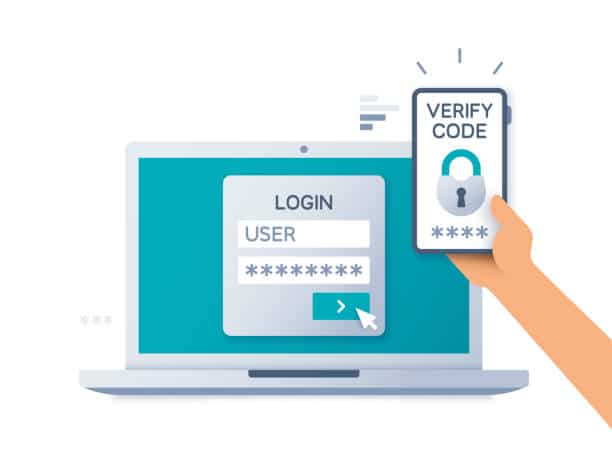As the issue of cyberattacks becomes prominent, attackers’ targets are increasing as many now target web applications due to the increased vulnerabilities. The vulnerabilities arise due to weaker and sometimes lack of web authentication protocols. Attackers can easily attack browsers to access all web communication, and without security protocols, they may become more vulnerable.
Web authentication protocols aim to limit browser attacks and protect web users. They ensure the information exchanged on the websites is free from eavesdropping and direct attack by hackers. If you are unaware of the authentication protocols, here are some methods to consider.

Table of Content:
Table of Content

1. HTTPS Authentication Methods
HTTPS authentication allows you to use the Security Sockets Layer, a protocol that encrypts messages between clients and servers. Web applications tend to use standard Security Socket Layer (SSL) to authenticate website activities and communications.
All you have to do is to install and configure an SSL certificate which enables you to use different HTTP protocols to authenticate private information such as payment details, login credentials, and other information used on different servers and browsers. To authenticate web applications, SSL certificates are available at discounted prices. Yes, a low-priced or cheap SSL certificate can secure the data and validate the publisher’s identity.
The HTTP protocols are the best data protection and authentication method to stop hackers from hacking and eavesdropping on the information exchanged on the network and web. The protocol will require the user to provide login details, such as usernames and passwords when making a request.
The user will send the client information and authorization header alongside the request to allow access. HTTP is one of the most secure ways to safeguard web communication; however, it has some shortcomings. For instance, sending usernames and other details every time will likely compromise information security over time, even when sent through secure communication and connection.
The security also depends on the nature of the website, i.e., if it has weak encryption, the attackers can easily attack the secure information being exchanged. Finally, once you log in, you cannot log out, especially if you are a low-level user using basic authentication. Despite all these shortcomings, it remains the most reliable and secure way to secure web applications and connections.
2. Hashing the Passwords
Storing private information is critical for preventing data breaches, and you can rely on password hashing to save user passwords to store all the credential information for databases. One of the ways to safely store the passwords is to hash, which is necessary for running and converting the passwords into mathematical algorithms and representation.
It differs from password encryption which enables you to reverse the encrypted information into text format for reading and comprehension. Once you have a password, you cannot convert it to the original text. Once hashed, the hackers cannot convert the password into an understandable format, preventing access to the website, browsers, and servers.
You should use advanced algorithms that cannot be reversed. Currently, different programs such as MD5 can revert hashed passwords cheaply. Before you hash the password, focus on the best and most reliable algorithms. Hashing passwords is a security strategy that can only be used by experts in IT and web application development. Other applications can also reverse the hashing effects, affecting the overall security.

3. Cookies
Cookies are one of the best ways to maintain security and privacy. Once you send an HTTP request, the browser puts the request into a cookie jar, and then the cookie will be sent back to you with the same request to the same origin or the HTTP origin. Cookies are basic to use, but there are various protocols you must follow and use.
One of the protocols is HTTP-only cookies which are critical for preventing attacks such as XSS. You can use this protocol by activating the HTTP-only flag on the cookie, which will deter the attacks.
The other principle is to use signed cookies which you can set alone on your browser to prevent any cookie modified to attack your web communications. Cookies are an authentic communication method; however, they have one major challenge: incompatibility with certain websites and settings.

4. Multi-factor Authentication
Multi-factor authentication can be used to secure web applications to boost their security capabilities. Besides password usage, the web currently has capabilities for multiple authentication protocols supported by other capabilities, such as virtual systems. Single-password usage is becoming vulnerable daily due to easy penetration for easy access.
As an additional layer for cybersecurity needs, multi-factor authentication will require two or more authentication protocols to guarantee additional data security. The authentication methods include biometrics, mobile support, and other features such as OTP services and passwords sent to mobile phones or messaging services such as Telegram and WhatsApp.

5. Token Authentication
A token is one of the most utilized web application authentication methods. You can use different types of tokens based on your needs, but the benefits will be the same. The tokens consist of three main parts: the header, which contains the hash algorithms. The second part is the payload which contains the claims.
The last bit is the signature which can be calculated based on different dynamics and methods. The token authentication method will be an idea for the web application for mobile devices. It can also be used for browsers to prevent XSS attacks. However, you need stronger web token settings and additional features to deal with XSS attacks which can sometimes be intense.
To decide if token authentication is right for you, comparing it against other options is sensible. For instance, weighing up OAuth vs JWT (JSON Web Tokens) will let you arrive at a suitable conclusion, rather than lumbering you with a method of authentication that turns out to be unfit for purpose.
6. Signature
Signatures can be used as complementary security methods to deal with loopholes in other authentication methods, such as cookies and tokens. For instance, it is necessary to seal the loopholes left when an attacker gains access to the token and cookie details, enabling them to tap into the web communication and protocols. By signing every request, web users shall protect against the effects of hackers using the obtained authentications.
Whenever a web user makes a request, they must use a private key to help create a hash hence the need for another authentication method, such as HTTP protocols. The web user and the provider must have the same private key for granting access.
Other details, such as date, should be added to determine and state the request expiration hence dealing with the log-out challenges experienced in HTTP. Signatures are necessary to protect the transport layer and not compromise it. If an attacker reads the traffic, they cannot modify or change content.
Conclusion
All these authentication methods will help you secure your web application; however, it is ideal to use one or more simultaneously on certain occasions. Or select one that uses multiple methods combined in one, boosting web security.














